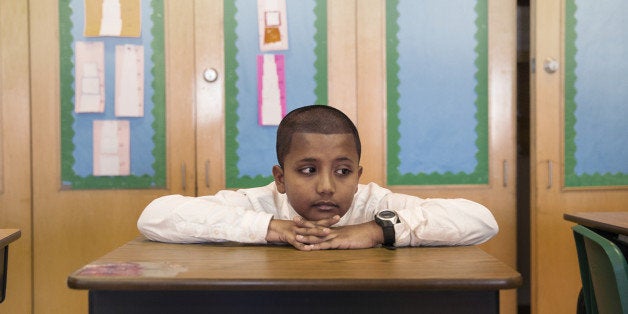
Regardless of how much money their district spends, more than 1 million American students attend unproductive schools.
A new report out Wednesday from the left-leaning Center for American Progress analyzes the educational productivity of nearly 7,000 districts across nearly 40 states. These districts enroll approximately 80 percent of the country’s students. The report determines a district’s productivity by looking at spending relative to student achievement, while controlling for external factors like socioeconomic status of students and the cost of living in the area.
According to this formula, the report found that hundreds of schools throughout the country fail to spend their money effectively.
“Some schools get a lot more bang for their buck than others,” Ulrich Boser, author of the report told The Huffington Post over the phone. “This is not an argument to spend less on education but to make sure our education spending goes to improve student achievement.”
SCROLL BELOW TO SEE HOW YOUR DISTRICT FARED
Somewhat surprisingly, the report found that the most affluent districts aren’t necessarily the most productive. Instead, the report found that only one-third of the districts that spend the most are also top achievers, indicating that they may not be spending in the most efficient way or on the right things.
“Many affluent districts, whether it was Scarsdale or Montgomery County, they didn’t do poorly. They have high achievement, but they’re also spending a lot, so that makes them not as productive,” said Boser. “We saw a lot of affluent areas don’t do great. They get middling results. Clearly there are other districts out there that might be spending less.”
Still, students who qualify for free and reduced-lunch are more than twice as likely to be enrolled in the least productive districts. Even more notably, black students are eight times more likely to be enrolled in one of the least productive districts than one of the most productive districts.
The organization’s research also found egregious examples of misplaced spending. In Texas, for example, more than 100 districts spend over $500 per student on athletics, and several spend more than $1,000 per student.
Information on districts’ demographics and spending habits and demographics came from 2010 -11 data from the National Center for Education Statistics, a branch of the Department of Education. Achievement data came from 2010-11 Department of Education figures.
The organization released its first report on education productivity in 2011. Since that time, Boser said, some states made progress on programs that work to make districts more productive; but he said conversations on the topic still seem to be lacking. Even though states routinely collect data on districts’ spending and achievement, only Florida and Texas regularly analyze their schools’ productivity.
“What has been surprising is how little states have done in this space and how little districts have done,” said Boser. “In education we don’t have that conversation. … We haven’t had that conversation about being more focused and getting a bigger bang for our buck.”
The report, which evaluated districts against others in their state, came with a database with which you can find districts’ productivity ratings, as shown below:


